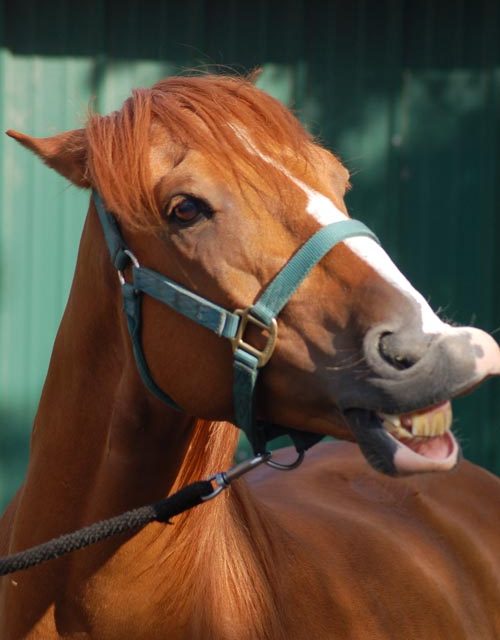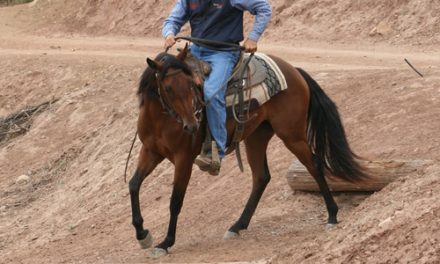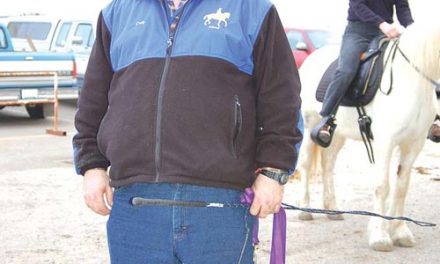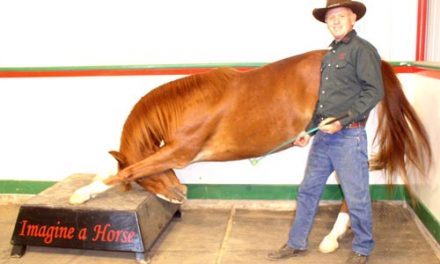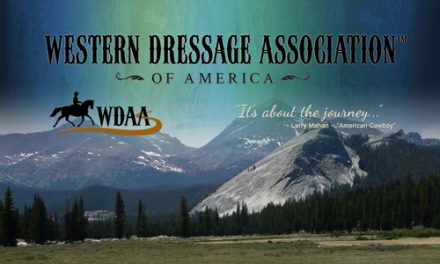 With over $39 billion spent annually in pet products in the US, it is a pretty safe bet that most horse owners are also dog owners. Good manners are essential for the family dog and proper training to mold a family dog into a trusted companion is big business. Television programs such as The Dog Whisperer and It’s Me or the Dog offer animal lovers practical guidance as well as entertainment value. Animal training is big business and has been given much study and involves a good measure of science as well as artistic flair. Those who have studied the science of animal training, especially canine training, are familiar with terms such as conditioned stimulus and response, operant conditioning, reinforcers, rewards, shaping behaviors, final behaviors and others too numerous to mention. There is so much information and it seems so complicated that it makes your head spin.
With over $39 billion spent annually in pet products in the US, it is a pretty safe bet that most horse owners are also dog owners. Good manners are essential for the family dog and proper training to mold a family dog into a trusted companion is big business. Television programs such as The Dog Whisperer and It’s Me or the Dog offer animal lovers practical guidance as well as entertainment value. Animal training is big business and has been given much study and involves a good measure of science as well as artistic flair. Those who have studied the science of animal training, especially canine training, are familiar with terms such as conditioned stimulus and response, operant conditioning, reinforcers, rewards, shaping behaviors, final behaviors and others too numerous to mention. There is so much information and it seems so complicated that it makes your head spin.
In our modern society, exposure to dogs as family members is so common place that even most children grow up with some knowledge of canine behavior. Almost everyone knows that dogs work for food! In the training of virtually every animal species, using food treats is an acceptable standard practice. The horse seems to be the only species where professional trainers don’t use food treats and don’t teach students how to use treats.
Training for the Ultimate Companion Horse or Trick Horse Training is probably more in line with dog training, especially canine agility training, than any other equine discipline. Many equine disciplines and sports have evolved from traditional ranching and hunting and many horses are bred specifically for these work categories. In many classes of working horses, such as cutting horses and race horses, the work or sport that they are bred and trained for is a fulfilling and adequate reward in itself.
Most traditional equine training utilizes release of pressure as an adequate reward for the horse. In creating what we call the Ultimate Companion Horse and in Trick Training we concentrate on shaping behaviors in an individual horse with emphasis on having fun AND increasing brain power for the horse and not so much emphasis on his horsepower. Release of pressure in this context is not always enough of a reward to add brilliance to a horse’s performance or desire to learn.
If the use of food treats is standard operating procedure in training most other species of animals, why is it not in horse training? We suggest learning to use treats responsibly and effectively can greatly enhance a handler’s results.
If you feed treats now, why do you feed them? If you feed treats because your horse loves them and looks forward to them, then perhaps you should feed them in a bucket. If you are to use them as a training tool, that is an entirely separate matter and you may want to feed them by hand.
Using treats as a motivational tool requires some special attention to detail and training of the trainer to be effective and not create a pushy or begging horse…a 1,000 lb cookie monster. There is a method to prevent the bad habit of mugging.
Carrots and apples fed in a bucket or by hand should be cut into small chunks. Our veterinarian told us that horses that choke on large chunks or even whole carrots is a common emergency seen in the clinic. Commercial horse treats such as those made by Start to Finish are economical to use, are bite size and come in great flavors. You can even experiment to find what your horse’s favorite flavors are.
Small bites are most effective in training. If treats are large and require lots of chewing, most horses will have forgotten what it was they did to earn it.
Treats are to a horse what getting a pay check is to a human. Use them as a reward not as a bribe. Getting a reward is for a good attempt at a new element of a lesson or for improvement in a lesson while getting a treat as a condition of performance is a bribe.
Know your horse’s personality and be realistic about his manners and your training skills. Training with treats takes practice to become effective at it. Most horses can tolerate treats if they are conditioned correctly. If you are willing to perfect your skills, the use of food treats can yield great benefits in performance and attitude.
Henry Blake’s “Thinking with Horses” is a terrific resource to study some of the basics of training such as-
Behavioral conditioning
Positive and negative reinforcement
Sequence, timing and verbal cues
How to enhance the traditional reward of release of pressure
Variable reward system
Using treats to enhance two-way communication skills
Some things to think about-
Wear gloves
Only feed other people’s horses with permission
Don’t feed or carry treats when entering a group of horses
Always use a designated pouch or method of carrying treats other than your pockets
You are the one to decide when the horse gets a reward – if he decides, it is intimidation!
Decide before each training session what your goal is and what behavior will warrant a reward, such as improved performance or a good try by your horse
Always handle your horse gently yet firmly
Horses have a very acute sense of fairness, preserve his good will by recognizing his efforts consistently
Give a few seconds “dwell” or “thought” time between repetitions so the horse can sort out mentally what he did for the treat.
Plan your reward system before you start training. You need to understand sequence, timing and cues. Decide what verbal cues you will use, including what you will call a “treat.” The clearer you can get the picture in your mind of what you want to happen, the easier it will be to make it happen! A horse can be taught to respond to whatever word or cue that you would like to use.
When teaching (from the ground) a particular move or even trick, you will position the horse in the same exact spot (initially) each and every time that you train for this particular response. This is setting him up for an expectation or anticipation that this is the place that you will be asking him for a specific response; you are establishing an understandable routine. Ask (cue) him for the response that you desire and give him adequate time to respond. When he gives the desired response or at least a good attempt tell him “good”, “yes” or whatever praise word you have decided on, pause just a second and then use your treat word or cue (we use “cookie time”) and then immediately give him his treat. The word or verbal cue between the time that you tell him “good” or “yes” AND the word for the treat are called bridge signals. These words are the equivalent of the click in Clicker Training. Separate the words clearly so that you have the option of using just the praise word and a stroke or giving the treat. This is called a variable reward. Keep the praise short and direct and be precise, methodical and timely.
You will be conditioning him in several ways – you are letting him know that his response was right, that his response was correct and the meaning of the praise word the treat word. It is very important that you get the sequence and the timing right or treats won’t work for you. The horse must never receive praise or treats outside of the established sequence. As the horse’s response to your requests becomes confirmed or almost second nature, you may vary the rewards. He will get to the point that he will not need a treat every single time he does something correctly but he will need at least the praise word and a stroke on the neck (variable reward).
Most horses will respond appropriately and even eagerly within the framework that the handler establishes. Occasionally a horse may be overly stimulated by food treats, may have a hard time controlling himself or be just plain pushy. If this happens, the handler must not be intimidated by the horse, but adhere to the established routine. If the horse is really pushy he may need correction to help him understand that he is to be obedient and NOT mug. In this situation it is almost never effective to poke or hit a horse. There is a great product called Nip Buster (www.nipbuster.com) that can be a wonderful aid to get the training back on target and control mugging. It is a citrus based spray that fits in the palm of the hand and can be sprayed in the vicinity of the horse’s nose if he violates the personal space rule. The product is harmless but most horses don’t like citrus and will happily get out of your space. Another effective way to control mugging is to put a small slice of lemon in the palm of your hand and just touch the horse’s nose with it if he gets aggressive.
The goal of using food treats is to enhance the learning process but not to make the training process and performance dependent upon their use. Over time and by using a variable reward system the ideal situation is for the horse to perform as a conditioned response and not because of a food treat.

